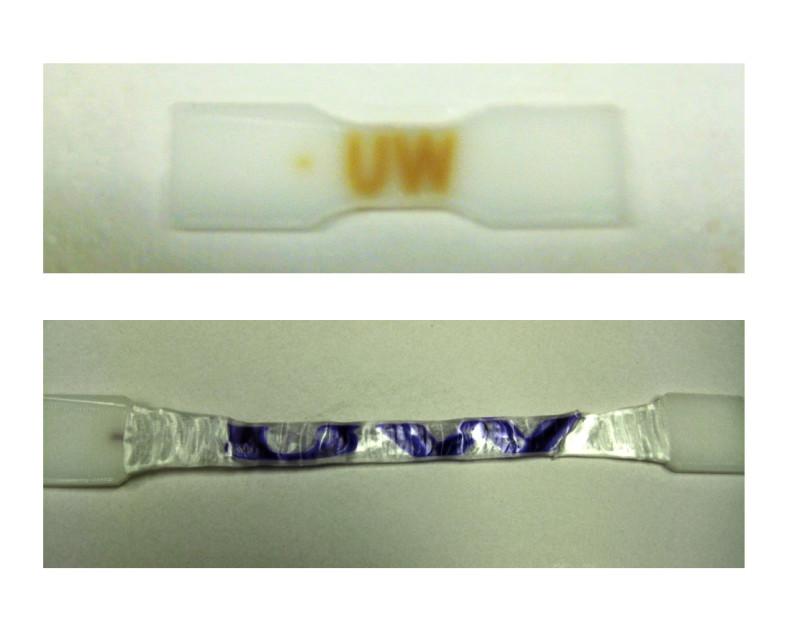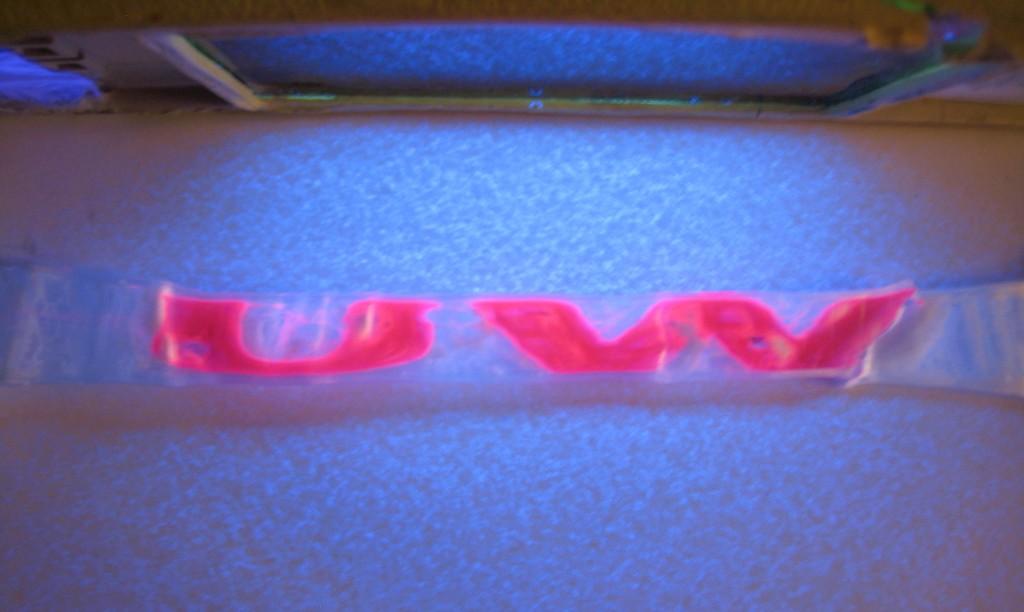 It’s a formidable combination as designer chemistry meets 3D printing, proving that the two may have a very promising future together. In a recent research project funded by the University of Washington, chemists and engineers collaborated in using 3D printing to manufacture inexpensive sensors that may prove to be invaluable in areas such as construction and infrastructure — and beyond.
It’s a formidable combination as designer chemistry meets 3D printing, proving that the two may have a very promising future together. In a recent research project funded by the University of Washington, chemists and engineers collaborated in using 3D printing to manufacture inexpensive sensors that may prove to be invaluable in areas such as construction and infrastructure — and beyond.
With the trend toward incorporating useful materials into 3D printing such as electronics, researchers set out to see whether they could indeed integrate chemistry into the printing process — and the answer turned out to be a resounding yes.
“We wanted to demonstrate that the functional chemistry could be incorporated readily into already printable materials,” said Andrew J. Boydston, UW Assistant Professor of Chemistry. “We found that designer chemistry can be incorporated into 3-D printing very rapidly.”

Andrew J. Boydston
With the intent to produce sensors that are able to not only indicate something like strain on a building or structure, they are also able to use these 3D printed sensors as a record of previous strain, working sort of like a timeline, so that undue pressure or strain is noted and can be examined.
The 3D printed sensor, in the form of a white plastic tab, was created by two UW doctoral students in chemistry, Gregory Peterson and Michael Larsen, who participated in the recent project led by a collaboration between Professor Boydston, and Mark Ganter and Duane Storti, UW mechanical engineers, who are behind the innovative 3D printing materials and techniques which incorporate chemistry.
For printing, they used two print heads with one containing polycaprolactone and one containing the same material but with the sporadic addition of spiropyran, which is responsible for the purple striping which appears when the 3D printed tab undergoes stretching due to significant force.
“Maybe the material isn’t currently under stress, but it had been several times prior to your observing it. And so these types of materials could record that load history,” Boydston said.
 Aside from the safety measures this could afford to multiple industries, one crucial feature regarding this sensor it that it can made for less than a dollar with the original 3D printing process — and takes about 15 minutes to 3D print.
Aside from the safety measures this could afford to multiple industries, one crucial feature regarding this sensor it that it can made for less than a dollar with the original 3D printing process — and takes about 15 minutes to 3D print.
Boydston sees this sensor as a tool that could be a versatile application and used in other areas, like sports. He envisions a 3D printed sensor that could use chemistry to measure the impact on football helmets when players are hit.
“At the UW, this is a marriage that’s been waiting to happen – 3-D printing from the engineering side, and functional materials from the chemistry side,” said Boydston.
Different variations can be produced all around with the project leading to different shapes and colorations, as well as differences in how the plastics and molecules react together, leading to a discussion regarding other uses for the 3D printed sensors in the engineering field and the possibility for use in medical devices.
“This is definitely an area that we want to continue to expand into,” Boydston said.
The principle behind the strips is simple in that the molecules in the 3D printed tabs are responding to what’s going on in their environment, with stretching occurring under pressure — plus causing the stripes to appear. The stripes are not the only indicators available in this new sensor either — the sensors could also be made to show indications of stress with UV lighting.
Do you work in an industry where you could see a viable application for these 3D printed sensors? How do you think these affordable prototypes could have an impact in the area of safety? Tell us your thoughts in the Designer Chemistry Mixed with 3D Printing forum over at 3DPB.com.

An example of the 3D printed tab exhibiting stress as it is stretched and shows purple coloring at bottom.
Subscribe to Our Email Newsletter
Stay up-to-date on all the latest news from the 3D printing industry and receive information and offers from third party vendors.
You May Also Like
3D Printing Unpeeled: New Arkema Material for HP, Saddle and Macro MEMS
A new Arkema material for MJF is said to reduce costs per part by up to 25% and have an 85% reusability ratio. HP 3D HR PA 12 S has been...
3D Printing News Briefs, January 20, 2024: FDM, LPBF, Underwater 3D Printer, Racing, & More
We’re starting off with a process certification in today’s 3D Printing News Briefs, and then moving on to research about solute trapping, laser powder bed fusion, and then moving on...
3D Printing Webinar and Event Roundup: December 3, 2023
We’ve got plenty of events and webinars coming up for you this week! Quickparts is having a Manufacturing Roadshow, America Makes is holding a Member Town Hall, Stratafest makes two...
Formnext 2023 Day Three: Slam Dunk
I’m high—high on trade show. I’ve met numerous new faces and reconnected with old friends, creating an absolutely wonderful atmosphere. The excitement is palpable over several emerging developments. The high...
































